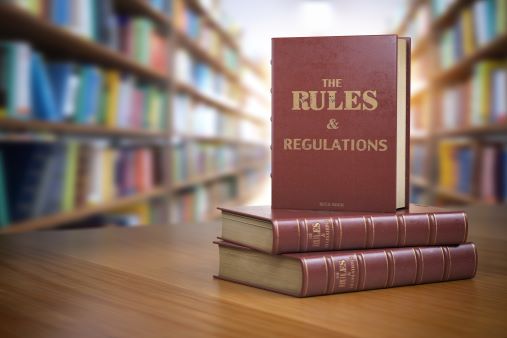Highlights
With federal courts increasingly deciding cases involving foreign conduct, at times involving antitrust laws or RICO conduct, it is worth considering, “Are there ties sufficient to bind a case to an American courthouse?”
On June 30, the FTC and the Antitrust Division of the DOJ issued new Vertical Merger Guidelines to outline how federal agencies should evaluate the impact of such distribution levels
With such evaluation, the agencies will be on the lookout for vertical mergers that could injure competition in relevant markets
Perhaps as a result of globalization, courts in the United States are often asked to hear cases under U.S. law that involve some level of foreign conduct. A threshold question is, for example, whether U.S. antitrust law or the Racketeer Influenced and Corrupt Organizations Act (RICO) reaches that conduct, which might be considered a price-fixing conspiracy or a fraudulent investment scheme.
This question is generally framed as one of “extraterritoriality.” In other words, does the statute at issue extend to conduct that happened outside the U.S. borders?
But, once that question is answered in the affirmative, is that the end of the debate? Yes, it’s the end of the substantive question of whether U.S. law applies; nonetheless, procedural arguments sometimes remain. Quite often, a defendant is able to mount an argument that even if a U.S. court has jurisdiction it should decline to exercise that jurisdiction under the doctrine of forum non conveniens (inconvenient forum).
Since the middle of the last century, the U.S. Supreme Court held in Gulf Oil Corp. v. Gilbert that the doctrine of forum non conveniens allows a district court to decline to hear a case even if there is proper jurisdiction and venue. The question becomes whether the trial court should dismiss a case after inquiring into the availability of an adequate alternative forum, thus balancing a number of public and private interest factors.
Take the following hypothetical. A group of plaintiffs have sued an American corporation for conspiring with several Canadian companies to fix the price of a commodity. Let’s suppose that the court has determined that U.S. antitrust laws apply. What happens if nearly all the evidence to support claims and defenses is located outside the U.S. and, moreover, that there are 10 plaintiffs and only one of them is American?
Here, the question essentially reduces to whether the defendant can overcome the presumption that the presence of an American plaintiff sufficiently anchors the case in the United States. There are good arguments in favor and in opposition, but they aren’t always hypothetical. Each year, federal courts decide dozens of forum non conveniens cases, so when filing or defending a case involving foreign acts and players, it’s worth asking, “Are there ties sufficient to bind a case to an American courthouse?”
Federal Antitrust Regulators Issue New Vertical Merger Guidelines
On June 30, 2020, the Federal Trade Commission (FTC) and the Antitrust Division of the U.S. Department of Justice (DOJ) issued new Vertical Merger Guidelines that outline how the federal antitrust agencies evaluate the impact of “vertical” mergers. Vertical mergers – as opposed to “horizontal” mergers between competitors – involve integrations between businesses at different levels of distribution (e.g., a manufacturer and a retailer or a manufacturer and a supplier).
Although the agencies rarely challenged vertical mergers after the 1960s, that has not been the case more recently. So the agencies’ decision to outline their current approach to evaluating the potential competitive impact of vertical mergers is welcome. According to a press release issued by the Department of Justice, specifically, the new guidelines:
- Explain that mergers often present both horizontal and vertical elements, and the agencies may apply both the Horizontal Merger Guidelines and the Vertical Merger Guidelines in their evaluation of a transaction, as part of a fact-specific process that involves a variety of tools to determine whether a merger may substantially lessen competition.
- Clarify that the agencies analytical techniques, practices, and enforcement policies apply to a range of non-horizontal transactions, including strictly vertical mergers, “diagonal” mergers, and vertical issues that can arise in mergers of complement.
- Clarify that when the agencies identify a potential competitive concern in a relevant market, they will also specify one or more related products, i.e. a related product is a product or service that is supplied or controlled by the merged firm and is positioned vertically or is complementary to the products and services in the relevant market.
- Provide detailed discussions, including multiple diverse examples, of the “raising rivals’ costs” and “foreclosure” theories of harm. In recent decades, these theories of harm have been the principle theories investigated in merger reviews.
- Identify conditions under which a vertical merger would not require an extensive investigation, because the merger does not create or enhance the merged firm’s incentive or ability to harm rivals.
- Emphasize that analyzing efficiencies is an important part of reviewing vertical mergers.
- Explain in detail the analysis of the elimination of double marginalization (EDM), which economists emphasize is a frequent procompetitive result of vertical transactions.
Although the published guidelines differ from the draft guidelines that the agencies promulgated earlier this year, a good deal of the guidance is not new; rather, it reflects and formally institutionalizes analyses and techniques that the agencies were already deploying. There is some overlap between the existing Horizontal Merger Guidelines and the new Vertical Guidelines, but there is one major difference – a vertical merger is not presumed to result in anticompetitive effects. This is to say, the agencies recognize that vertical mergers can be pro-competitive and benefit consumers through cost savings. For example, the agencies explicitly allow that the elimination of “double marginalization” (i.e., the merged firm can supply its own inputs instead of purchasing them from others).
There are no “safe harbors” in the new guidelines and a key takeaway is that the agencies believe that vertical mergers are “not invariably innocuous.” So, although vertical mergers will continue to be reviewed less skeptically than their horizontal brethren, the agencies will be on the lookout for those that could injure competition in relevant markets.
For more information, please contact the Barnes & Thornburg attorney with whom you work or Randy Gordon at 214-258-4148 or rgordon@btlaw.com, Kendall Millard at 317-231-7461 or kendall.millard@btlaw.com, or Paul Olszowka at 312-214-5612 or paul.olszowka@btlaw.com.
© 2020 Barnes & Thornburg LLP. All Rights Reserved. This page, and all information on it, is proprietary and the property of Barnes & Thornburg LLP. It may not be reproduced, in any form, without the express written consent of Barnes & Thornburg LLP.
This Barnes & Thornburg LLP publication should not be construed as legal advice or legal opinion on any specific facts or circumstances. The contents are intended for general informational purposes only, and you are urged to consult your own lawyer on any specific legal questions you may have concerning your situation.















